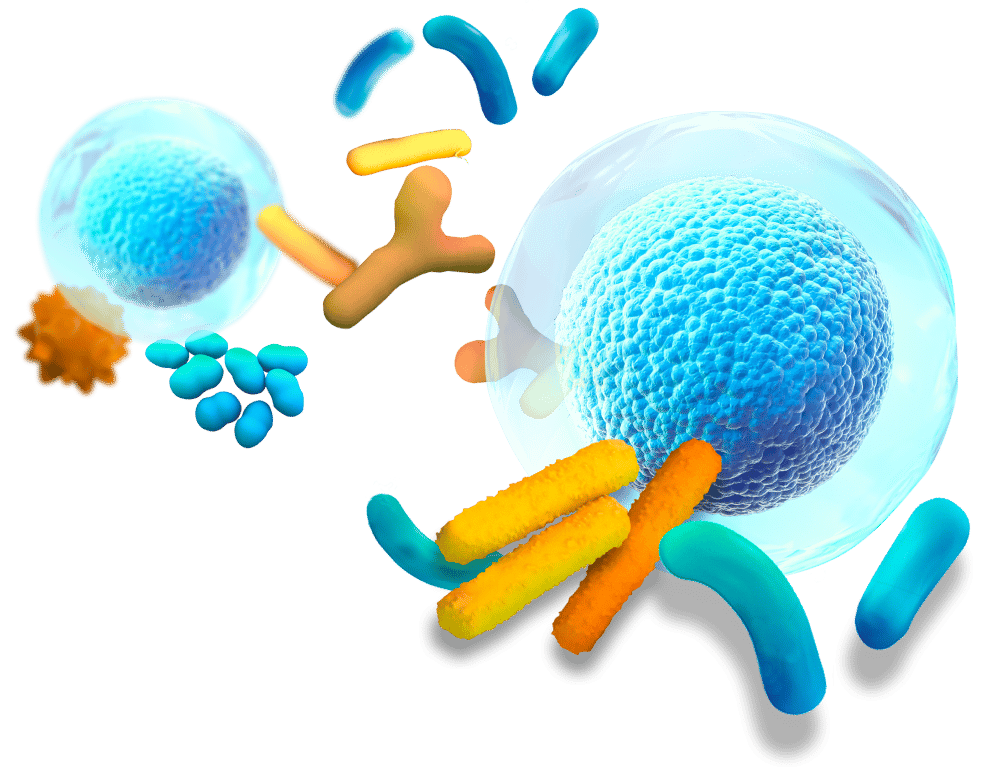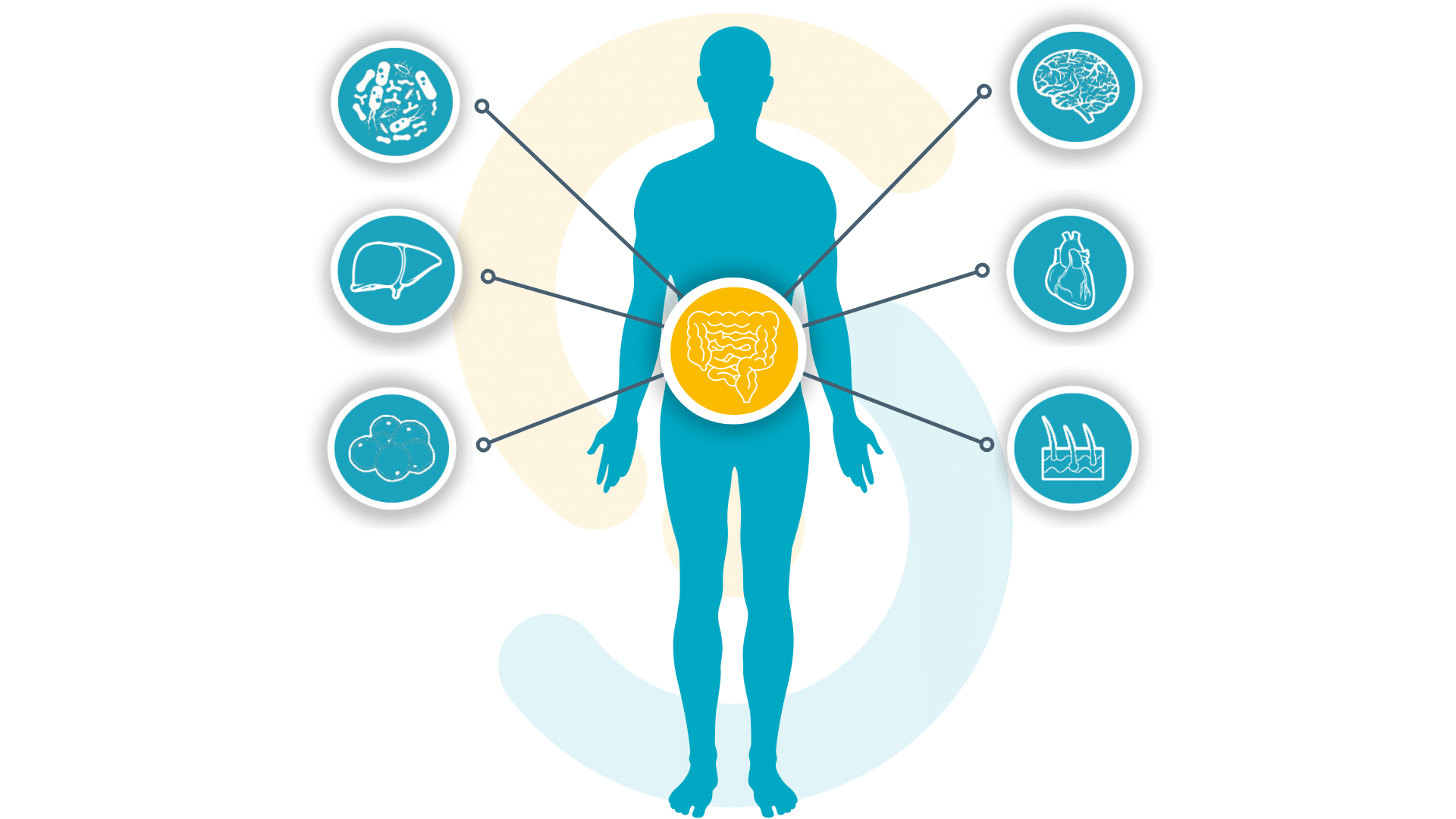Have you ever wondered how your body turns the food you eat into the energy you need?
The secret lies within the fascinating world of gut physiology. Your digestive tract is not just a simple tube for digestion—it’s a complex system designed to absorb essential nutrients, secrete necessary enzymes, and maintain smooth motility.
But did you know that your gut also communicates with your brain through the gut-brain axis, influencing not only digestion but also mood and overall well-being?
This interplay involves intricate hormonal signals, as well as neural connections that involve the autonomic and central nervous systems. Understanding your gut health is crucial for your overall vitality.
So, how can you take better care of your gut and improve its functions like motility and absorption?
Let’s dive into the science behind gut care and discover how you can optimize this amazing system for long-term health!
The structure of the digestive tract: a journey from ingestion to absorption
The digestive tract, is a continuous tube that plays a central role in the processing and absorption of nutrients, beginning at the mouth and extending all the way to the anus. Each segment of the digestive tract has a specialized function that ensures proper digestion, gut motility, and nutrient absorption, maintaining health.
1. Mouth
The journey begins in the mouth, where food is mechanically broken down by chewing and mixed with saliva. Saliva contains enzymes, such as amylase, which start breaking down carbohydrates into simpler sugars, initiating the digestive process. This phase is crucial for preparing food for efficient absorption later in the gut.
2. Esophagus
Once swallowed, food moves down the esophagus through a series of coordinated muscle contractions known as peristalsis. The esophagus acts as a conduit, transporting food from the mouth to the stomach.
3. Stomach
The stomach is a muscular organ that plays a critical role in the digestion of proteins. Here, food is mixed with gastric juices, which contain hydrochloric acid and the enzyme pepsin. This acidic environment breaks down proteins into peptides, further preparing them for absorption in the small intestine. The stomach also helps regulate the passage of food into the next segment through controlled emptying, ensuring that the small intestine can manage the incoming nutrients efficiently.
4. Small Intestine
The small intestine is the powerhouse of nutrient absorption. Divided into three sections—the duodenum, jejunum, and ileum—it is where most nutrients, including macronutrients (carbohydrates, fats, and proteins) and micronutrients (vitamins and minerals), are absorbed. Enzymes from the pancreas and bile from the liver further aid in breaking down food into absorbable molecules. The surface of the small intestine is lined with millions of tiny finger-like projections called villi, which maximize nutrient absorption.
5. Colon
After passing through the small intestine, any remaining undigested material enters the large intestine. Here, water and electrolytes are absorbed, and the gut microbiota, plays a crucial role in fermenting undigested carbohydrates. This section is vital for maintaining hydration and forming solid waste, which is eventually excreted.
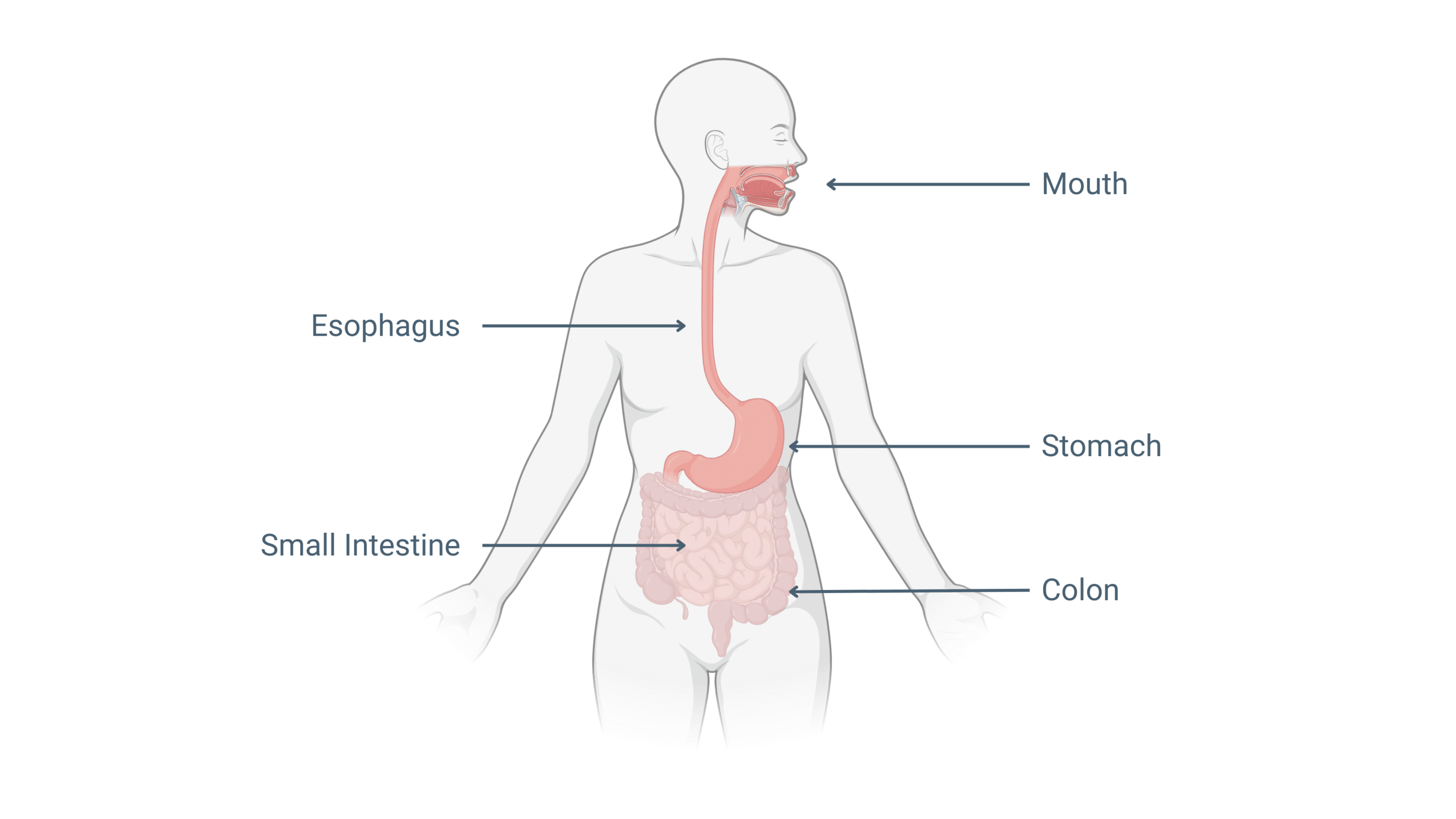
Each segment of the digestive tract plays a unique and vital role in ensuring proper digestion and nutrient absorption.
Curious to learn more?
In the upcoming newsletters, we’ll take a closer look at each part of the digestive system—from the mouth to the large intestine—unpacking how they work together to keep your gut health in top shape!
Whether it’s the enzymes in your stomach or the microbial wonders of your colon, each area has its own fascinating story to tell. Stay tuned for an exciting journey through your digestive tract and discover how to take the best care of your gut!
The gut’s primary role: nutrient absorption for optimal health
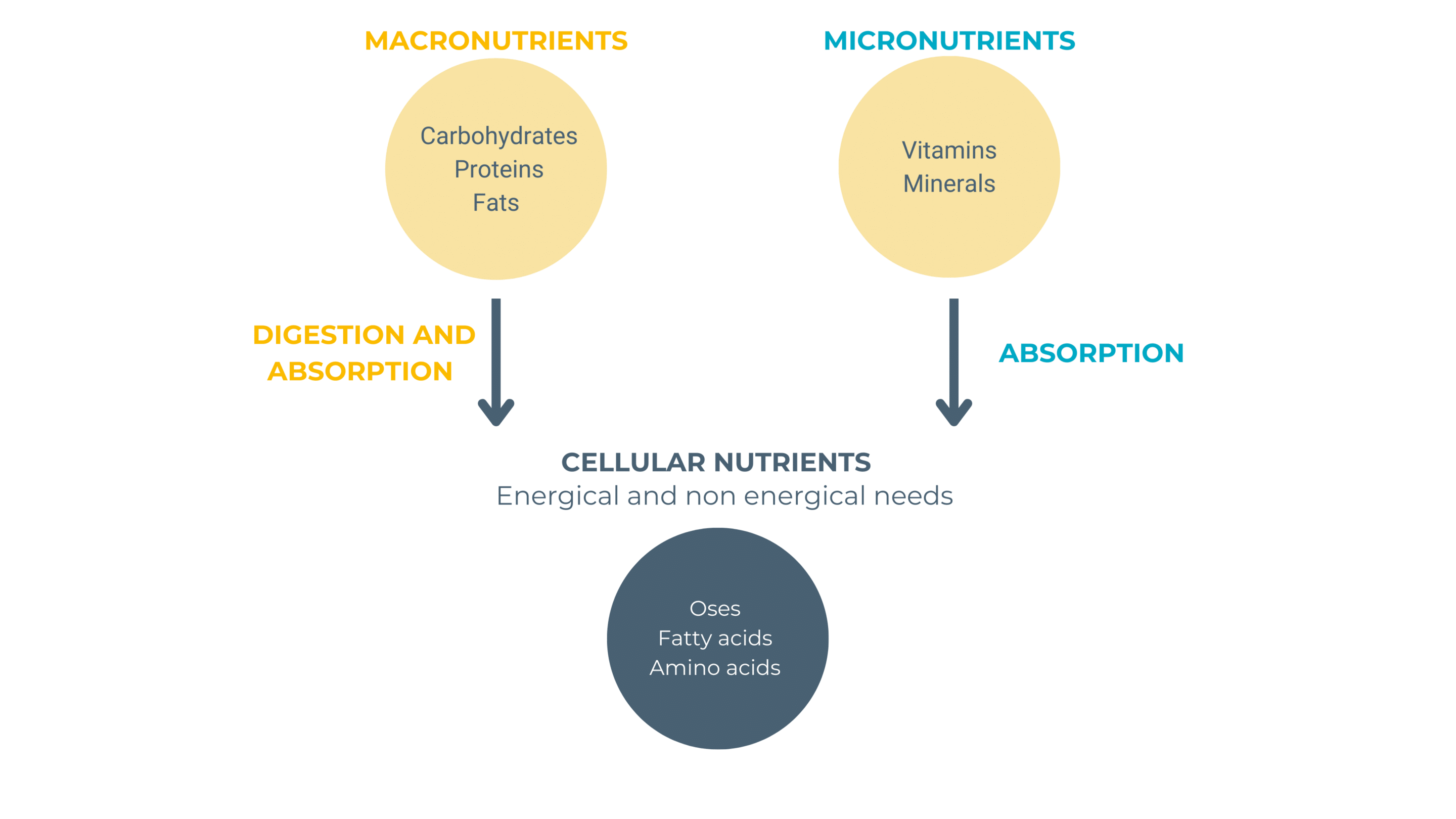
At the heart of gut physiology lies its essential function—nutrient absorption. The food we consume is broken down into macronutrients like carbohydrates, fats, proteins, and water, as well as micronutrients such as vitamins and minerals. These nutrients are vital for our bodies, fueling both our energy needs and non-energy functions like cell repair and immune support.
But how does this process happen? Once digested, the nutrients are absorbed through the walls of the intestines and transported to the cells throughout the body, where they are used to sustain life. Ensuring proper gut health is key for maintaining efficient nutrient absorption, which directly impacts overall well-being. If gut motility is disrupted, or if there’s an imbalance in the gut-brain axis, the body’s ability to absorb these crucial nutrients can be compromised. That’s why focusing on gut care is so important for long-term health, allowing your body to function at its best.
A comprehensive overview of digestion: the gut’s inner workings
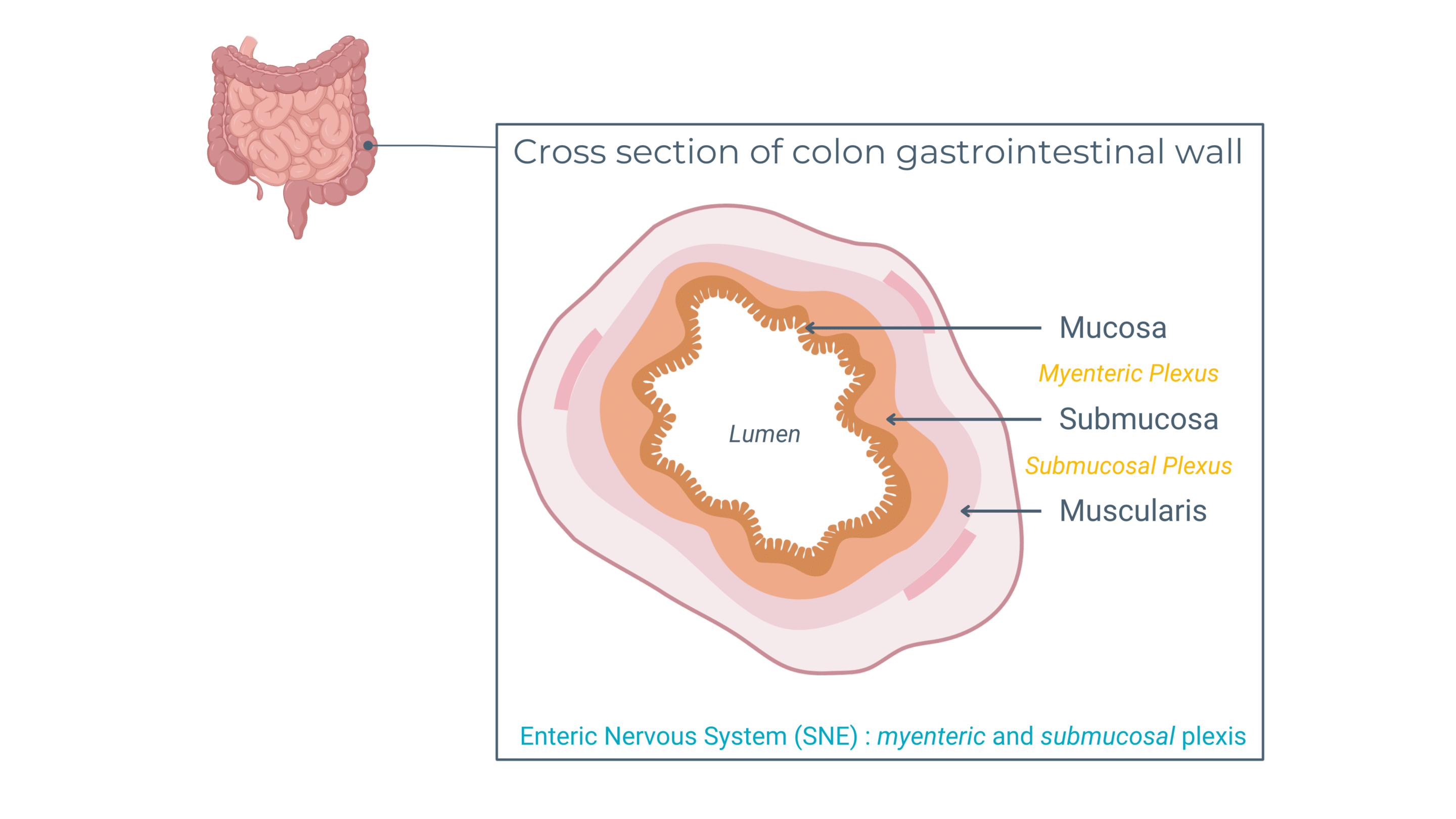
To understand how the digestive system efficiently absorbs nutrients and maintains gut health, we first need to explore the structural complexity of the intestinal wall and the specialized cells that ensure its smooth functioning. The gut is lined with multiple layers: the mucosa, submucosa, and muscularis. The mucosa contains absorptive cells like enterocytes, which are responsible for nutrient uptake, and goblet cells, which secrete mucus to protect the lining from digestive acids. Beneath these layers lies the enteric nervous system (ENS), often referred to as the “second brain,” which consists of the myenteric and submucosal plexuses. These plexuses play a crucial role in regulating gut motility, secretions, and blood flow, ensuring efficient digestion and communication with the rest of the body via the gut-organs axis.
Through neural connections with the autonomic nervous system (ANS) and hormonal signals, the ENS maintains a balanced digestive environment, responding to stimuli such as food intake and emotional states. This highly integrated communication network makes the gut a dynamic system capable of managing complex digestive processes while interacting with other organs.
Regulation of the digestive process: sensing and responding to internal and external signals
The regulation of digestion is a complex and dynamic process, primarily driven by the gut’s ability to detect and respond to various internal stimuli. This intricate system relies on specialized receptors within the digestive tract, which ensure the smooth functioning of gut processes like gut motility and nutrient absorption. These receptors are key to maintaining overall gut health by detecting mechanical, chemical, and osmotic changes in the gut environment.
Mechanoreceptors, Osmoreceptors, and Chemoreceptors
Embedded within the cells of the intestinal lining, these receptors continuously monitor the state of digestion.

Mechanoreceptors
Mechanoreceptors respond to physical stimuli such as the stretching and pressure changes in the gut wall—crucial signals during food intake and transit.
Osmoreceptors
Osmoreceptors gauge the osmolarity of the chyme, detecting variations in ion concentrations as food is digested.
Chemoreceptors
Perhaps most critical are chemoreceptors, which sense chemical signals like the byproducts of digestion—fatty acids, peptides, and simple sugars. Additionally, chemoreceptors pick up on gastrointestinal hormones (such as gastrin, GLP-1, and CCK) and neurotransmitters like serotonin, ensuring communication across the digestive system. These receptors are found on diverse cell types, including enterocytes responsible for absorption and enteroendocrine cells that regulate hormonal release.
Neural regulation of digestion: long and short reflex pathways
The gut-brain axis, is integral to the regulation of digestion, relying on both external stimuli and localized internal signals. This regulation occurs through two key neural pathways: long reflexes, mediated by the central nervous system (CNS), and short reflexes, governed by the enteric nervous system (ENS) within the gut.
Long Reflexes (CNS Control)
The digestive process begins even before food reaches the stomach. External stimuli, like the smell or sight of food, trigger sensory receptors that send signals to the CNS. The brain then responds by sending efferent vagal signals back through the autonomic nervous system, impacting gut motility, enzyme secretion, and other digestive functions.
Short Reflexes (ENS Control)
While the CNS coordinates external stimuli, the ENS handles local gut processes through short reflexes. When chemoreceptors, osmoreceptors, and mechanoreceptors in the gut detect changes in the chyme or the gut’s physical state, the ENS activates neurons to regulate smooth muscle contractions and glandular secretions. This allows the gut to adapt quickly to its immediate needs without involving the CNS. By influencing local gut motility and secretory functions, these reflexes ensure that digestion is continuously optimized for nutrient absorption.
Hormonal regulation of digestion: fine-tuning gut function
Beyond neural control, the digestive process is also meticulously regulated by hormonal signals that orchestrate various phases of digestion. These hormones, secreted by specialized cells within the gastrointestinal tract, ensure that digestion is precisely coordinated to meet the body’s nutritional and energetic demands.
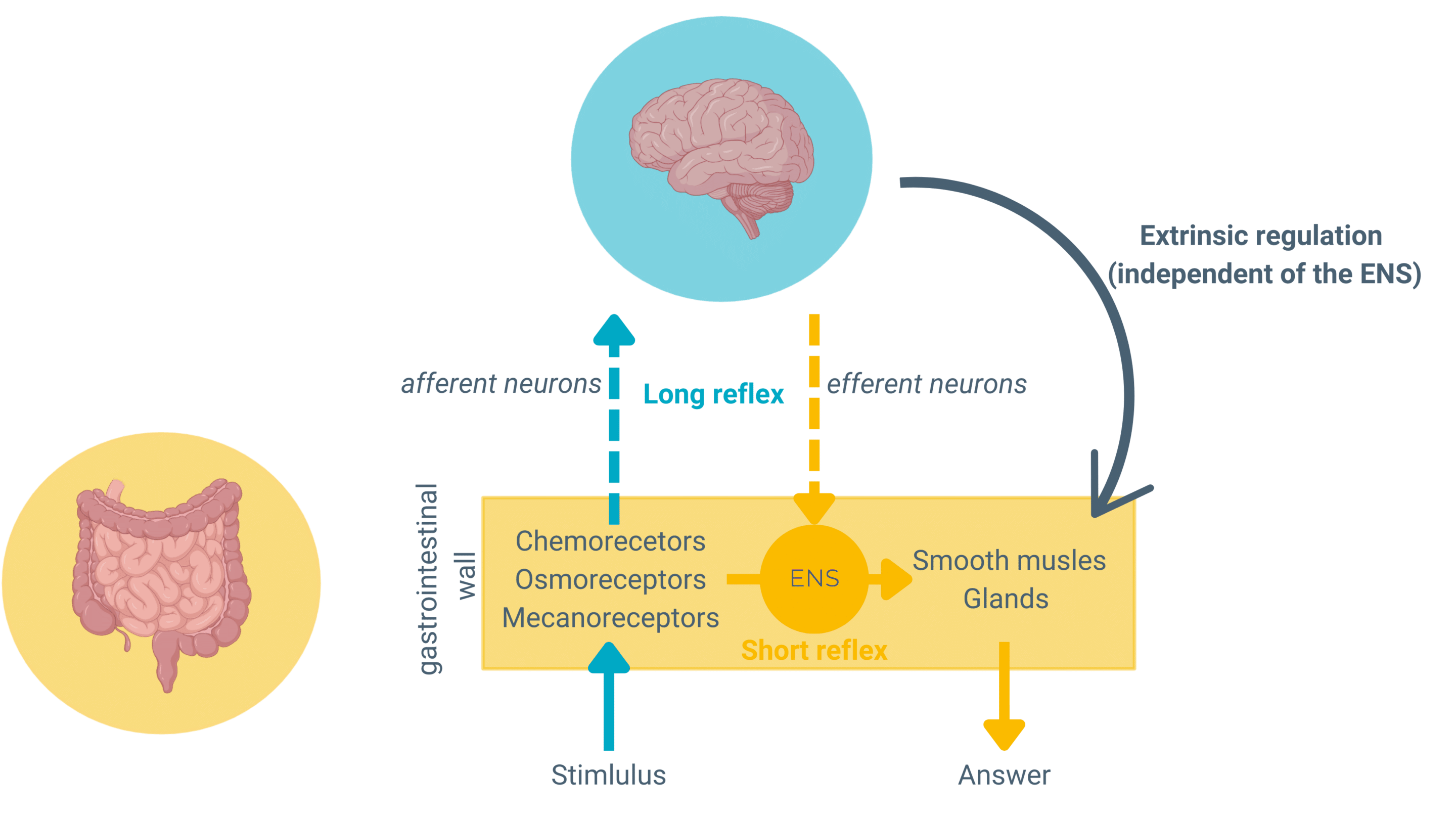
Together, these highly sophisticated mechanisms underscore the importance of maintaining proper gut care to ensure the efficient regulation of digestion. A healthy gut is not only vital for nutrient assimilation but also for the proper functioning of the gut-brain axis, impacting everything from digestion to mental well-being.
An integrated approach to gut health
Recognizing the gut as a central communication hub opens new possibilities for integrated health solutions. Beyond digestion, gut physiology is deeply linked to various therapeutic areas, where disruptions in inter-organ communication can influence conditions such as metabolic disorders, skin health, and immune responses. Enterosys’s research extends into preventive and therapeutic applications across pharmaceuticals, dermocosmetics, nutraceuticals, and food and feed, with a focus on the interconnected impact of gut health.
Embark with me on an exciting journey through the gut’s amazing world!
We’ll uncover how this complex system does so much more than digest—it’s at the heart of your body’s well-being, connecting to every organ and influencing health in ways you might not expect. Together, let’s explore how gut health holds the key to breakthroughs in pharmaceuticals, dermocosmetics, nutraceuticals, and even food innovations.
Ready to see just how essential your gut is to your whole-body health?
Inspired by the work of Claude Knauf.
